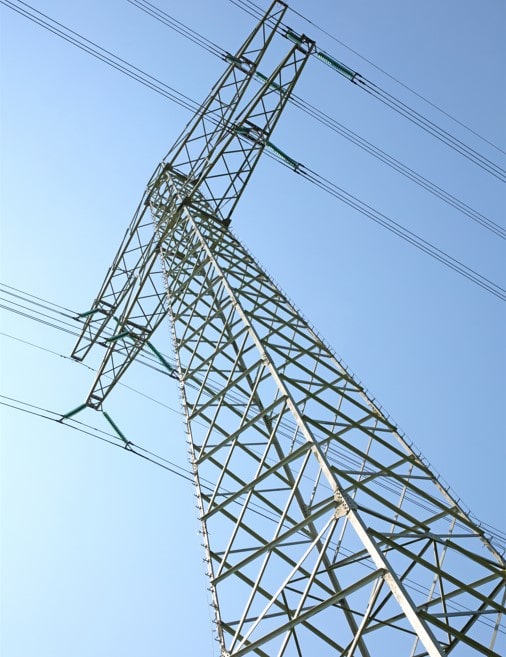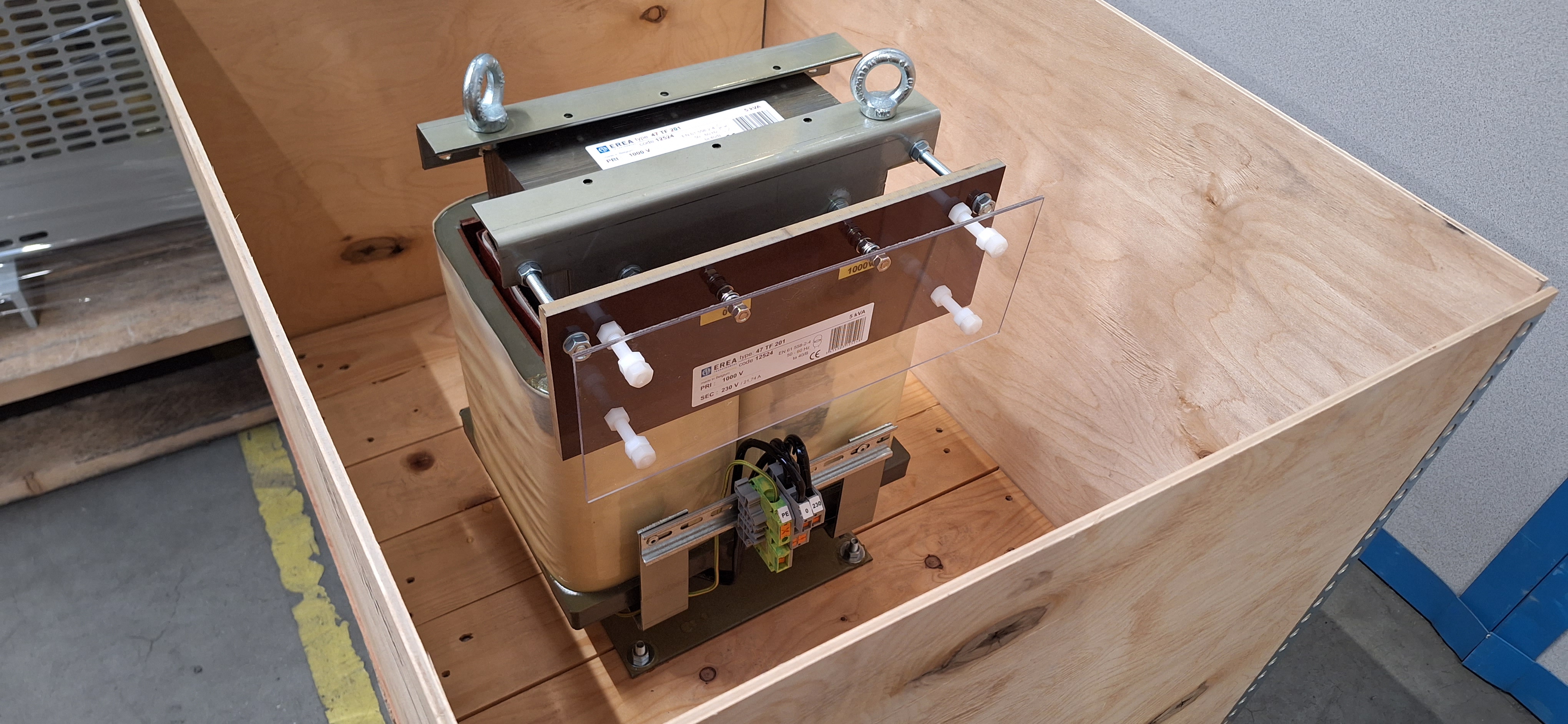Transformers that protect against lightning strikes
If lightning is a real risk to outdoor installations where you are, you need special EREA transformers to protect your low-voltage supply or distribution network. These transformers provide excellent separation – or high dielectric strength – between the primary and secondary windings and the earthing in the transformer.
What makes this transformer so special?
Casting the transformer’s primary winding in a PU resin produces very high insulation between the windings and earthing.

But we’ve also added multiple surge arresters. Thanks to their non-linear resistance, these reduce the resistance drastically when there’s a sudden voltage spike, bypassing the current away from devices.
Testing to ensure reliability
Through its specific design, this transformer is capable of withstanding a powerful lightning surge. The lightning surge test is described in standard EN 61000-4-5 (50 kV – 1.2 / 50 µs waveform).
To check the high degree of isolation between the primary and secondary windings and earthing, we put our transformers through these tests:
- dielectric strength test (20 kV AC)
- lightning surge test (50 kV/1,2/50 ms)
Below are two real-life case studies where these special EREA transformers protect against lightning strikes.
Case study 1: Mobile phone network installations on high-voltage masts


If lightning strikes the high-voltage (HV) mast or if there is a HV fault, the transformer protects the low-voltage (LV) distribution network. Protecting this network is an absolute must;
that’s why the transformer has very specific isolation properties. What’s more, the transformer is equipped with surge arresters to protect both the transformer itself and the low-voltage grid upstream.
And all of this is in accordance with the Synergrid C1/115 technical regulation.
(project in collaboration with Mwingz)
Case study 2: Measuring system on a flux tower in the Congolese rainforest


Deep in the Congolese rainforest, Ghent University is researching the physiological processes and CO2 exchange by the tropical forest. A 55 m high flux tower has been built to collect valuable data (meteorological, gas concentrations, etc.) in the fight against climate change.
The climate tower is located in Yangambi, an area frequently struck by lightning. However, the tower houses sensitive measuring equipment and analyzers that must be well protected.
A stable power supply is also crucial to ensure continuous data collection. Therefore, reliable lightning protection is essential for both the measuring equipment and the nearby solar panel installation.
A formidable task achieved by the special EREA transformer, specifically designed to protect against lightning strikes.
The installation works as follows:
- Solar panels generate the energy.
- The transformer is powered by the solar panel inverter.
- In turn, the transformer supplies and protects the measuring instruments on the mast.
- But the transformer also protects the solar panel inverter and the power cable in the event that lightning strikes the mast.
Read more about this project on the website of ATS Groep, which was commissioned to find the solution for the flux tower.
(project in collaboration with Universiteit Gent and ATS Groep)
Learn more about lightning protection transformers
Got any questions? We’d be happy to take the time to help find the right transformer solution for you.
